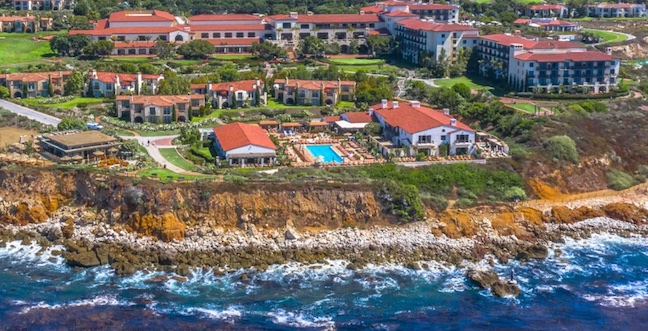
One of the hottest topics in the corporate world these days is sustainability. Pretty much every company and festival or event has a sustainability initiative and they are letting people know about it by posting on their website, in souvenir programs and in PR materials. Even auto racing is into the act.
Sustainability in tourism is also prevalent, almost as important to tourism boards as the destination itself.
I recently attended a tourism sustainability conference hosted by (W)right On Communications, a PR agency in San Diego. The panel included Linsey Gallagher, CEO of Visit Napa Valley and Todd Majcher, Senior Vice President for developer Lowe – which, among other things, built the specular Terranea Resort just up the coast in Palos Verdes, CA – with the moderator being Julie Wright, President of (W)rite On.
Sustainability programs were discussed with the most interesting being the development of a bike trial through Napa that will utilize a ferry from San Francisco. I am an avid bike rider and with e-bikes becoming a huge part of tourism around the world, this is an excellent initiative.
But there is one factor that a company or destination cannot control. And that is the travelers themselves. If the tourists don’t buy into sustainability then it will inch along like traffic on an LA freeway.
When I lived on The Strand in Hermosa Beach, CA, I was constantly picking up trash off the beach. Three or four times a day, I would collect armloads of garbage, some of it dumped on the sand right next to a trashcan. You just can’t change some people’s behavior.
A lot of it has to do with culture. When I was in Australia, I was extremely impressed with how clean the country was; I rarely saw a piece of trash anywhere. The place was as spotless as Disneyland. I got the feeling that if I stood somewhere long enough and saw someone toss so much as a napkin on the street, in the water or on the beach that an official would appear from out of nowhere, handcuff the perpetrator and send them off to a penal colony or something. Either that or make them drink oil cans of Foster’s beer.
When I got back to LA, where I lived at the time, I could not help but notice all the trash on the side of the road and on our beautiful beaches.
Here in San Diego, it’s almost as pristine as Australia. With the notable exception of the homeless, who leave discarded items that could fill a shopping cart all over the streets. Otherwise, it is a very clean city; locals and tourists alike respect it and help to keep it that way.
Public transportation is another element of travel sustainability. Europe and Australia have city trams and efficient long-distance trains. Only a few cities here in the States have good public transit because people are used to taking their cars everywhere. Plus, the perception of public transportation is that it used only by low-income residents. Travelers need to be aware of, and encouraged to take, a destination’s public transportation.
So yes, all the initiatives are great and tourism boards and developers certainly are making a positive impact with measures such as energy-saving buildings and Napa’s water conservation methods. But to be fully effective, the very people they are targeting are the ones who will really determine the long-term sustainability of our planet.
You can watch the (W)right On-hosted tourism sustainability video here: Future of sustainable tourism (wrightoncomm.com)
Leave a Reply
You must be logged in to post a comment.